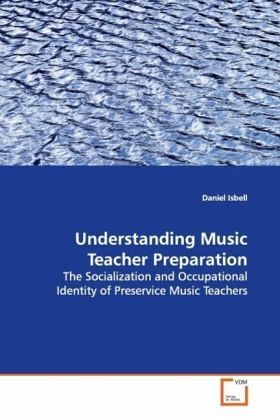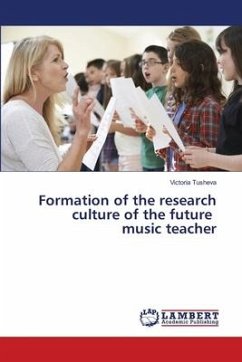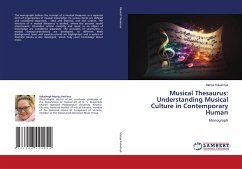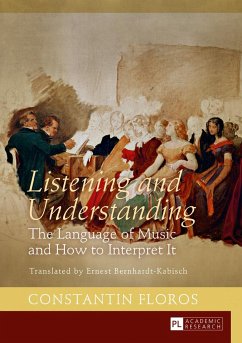
Understanding Music Teacher Preparation
The Socialization and Occupational Identity of Preservice Music Teachers
Versandkostenfrei!
Versandfertig in 6-10 Tagen
39,99 €
inkl. MwSt.

PAYBACK Punkte
20 °P sammeln!
Five hundred seventy eight preservice music teachersfrom thirty randomly sampled institutions answeredquestions regarding their significant influencesprior to and during their preparation programs. Specific research questions were: What are thesalient facets of primary and secondarysocialization? What is nature of occupationalidentity? What is the status of student thinkingabout music teaching? Is there a significantrelationship between primary/secondary socializationand occupational identity? Is there a significantrelationship between occupational identity and careerconfidence? What effect do...
Five hundred seventy eight preservice music teachers
from thirty randomly sampled institutions answered
questions regarding their significant influences
prior to and during their preparation programs.
Specific research questions were: What are the
salient facets of primary and secondary
socialization? What is nature of occupational
identity? What is the status of student thinking
about music teaching? Is there a significant
relationship between primary/secondary socialization
and occupational identity? Is there a significant
relationship between occupational identity and career
confidence? What effect do individual difference
factors (gender, major applied
area, musician and teacher role models, year in
school, field experience) have on occupational
identity? Descriptive and inferential statistics were
used to answer these questions and gain a deeper
understanding of many of the attitudes and opinions
of undergraduate music education students in the
United States.
from thirty randomly sampled institutions answered
questions regarding their significant influences
prior to and during their preparation programs.
Specific research questions were: What are the
salient facets of primary and secondary
socialization? What is nature of occupational
identity? What is the status of student thinking
about music teaching? Is there a significant
relationship between primary/secondary socialization
and occupational identity? Is there a significant
relationship between occupational identity and career
confidence? What effect do individual difference
factors (gender, major applied
area, musician and teacher role models, year in
school, field experience) have on occupational
identity? Descriptive and inferential statistics were
used to answer these questions and gain a deeper
understanding of many of the attitudes and opinions
of undergraduate music education students in the
United States.












